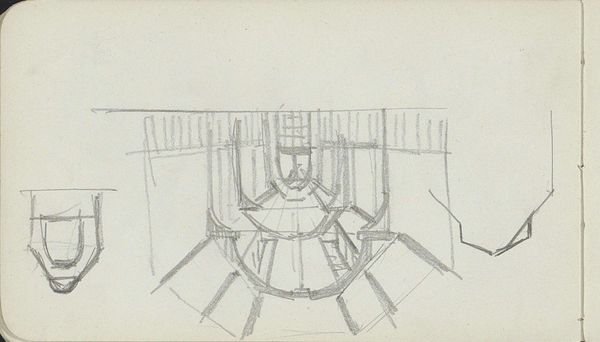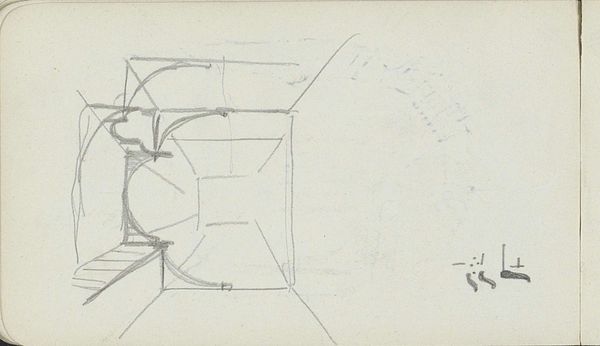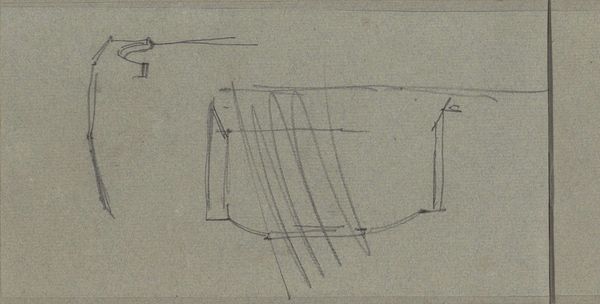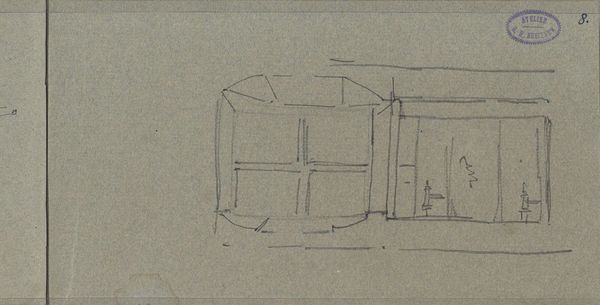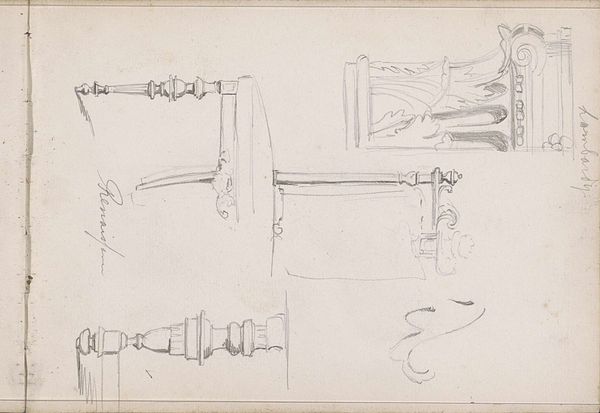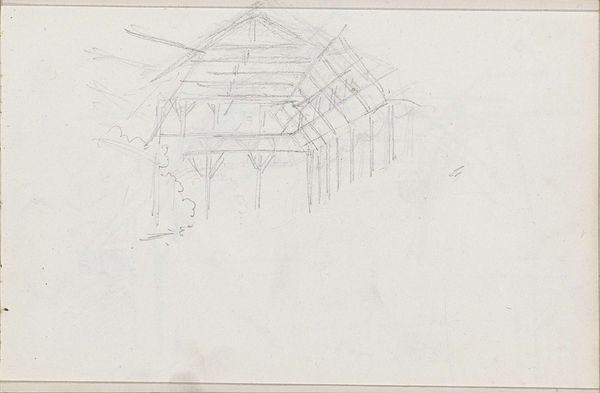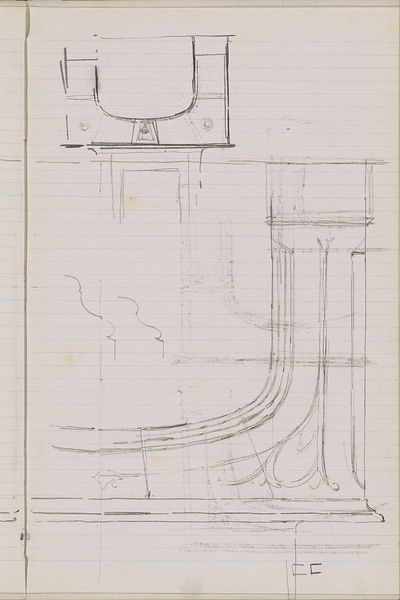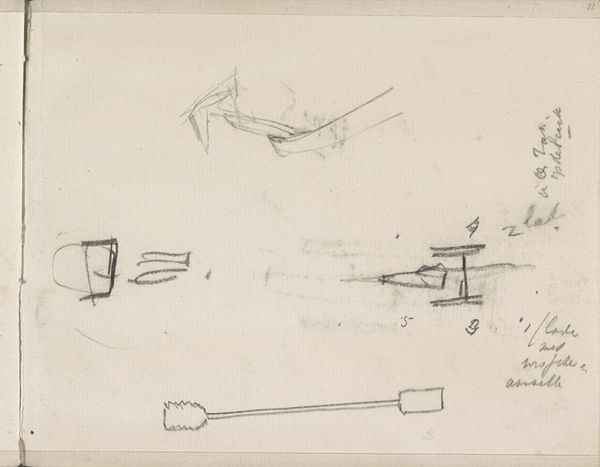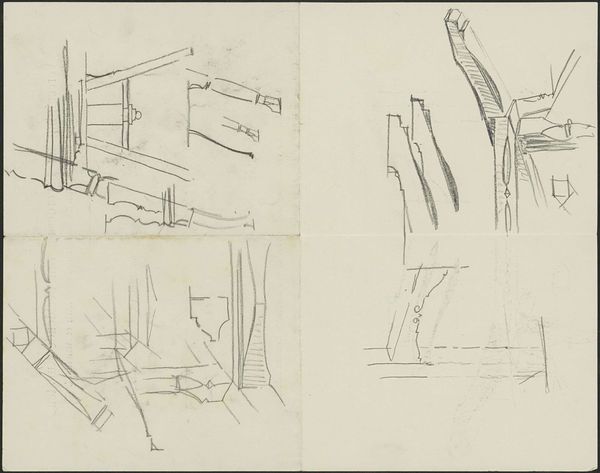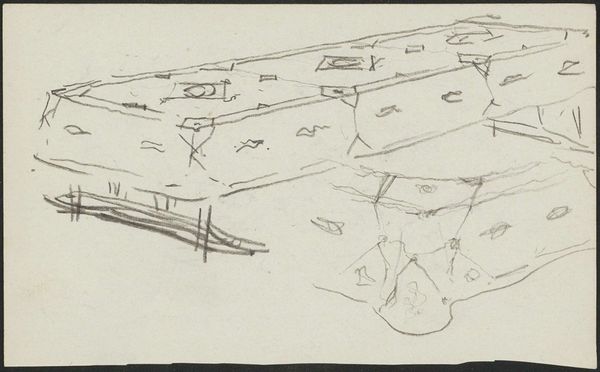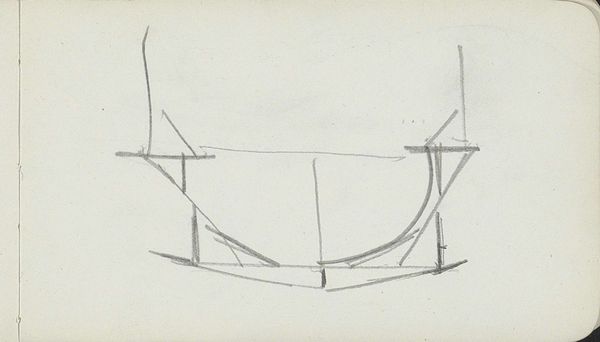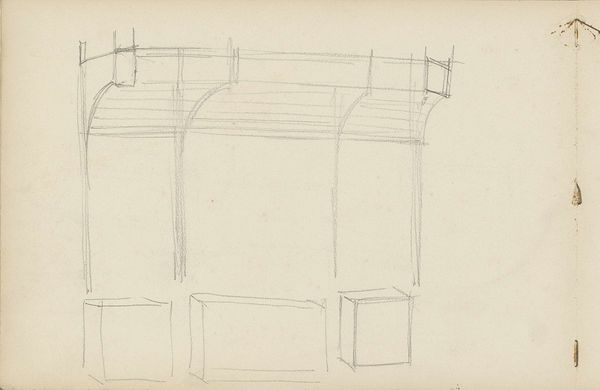
drawing, pencil, architecture
#
drawing
#
aged paper
#
quirky sketch
#
sketch book
#
incomplete sketchy
#
personal sketchbook
#
idea generation sketch
#
sketchwork
#
geometric
#
pencil
#
line
#
sketchbook drawing
#
sketchbook art
#
architecture
#
initial sketch
Copyright: Rijks Museum: Open Domain
Editor: This is "Gewelf van een kerk," or "Vault of a Church," a pencil and chalk drawing by Carel Adolph Lion Cachet from around 1905. The sketch feels very structural and almost mathematical in its precision, yet the lightness of the medium gives it a sort of impermanence. How do you see it? Curator: This drawing is part of a larger historical context where the role of the church itself was being questioned, debated, and re-evaluated. The unfinished nature, the focus on structure rather than decoration, resonates with these societal shifts. Do you think Cachet is subtly questioning the very foundations, the structures, that uphold institutionalized religion? Editor: That’s a fascinating way to frame it. I hadn’t considered the socio-political implications of emphasizing the bare structure. It’s interesting how he omits any traditional religious symbolism, directing attention to pure architecture. Is there something subversive about it? Curator: Subversion is perhaps too strong, but it's undeniable that Cachet focuses on the physical, almost industrial, components of the church vault, devoid of spiritual adornment. Consider the time period; secularization was on the rise. Artists like Cachet were reflecting these changing values. How do you feel this work relates to current conversations about the role of institutions in society? Editor: It really pushes me to rethink how the church is depicted, its transformation through social critique. Maybe seeing its most basic, architectural form serves as an analogy for dismantling established hierarchies. Curator: Exactly. By stripping down the vault to its basic geometry, Cachet opens up space to reimagine the functions and meanings of these hallowed spaces, both historically and for the future. Editor: I’ll never look at a church sketch the same way. It really challenges you to go beyond the surface and engage with the broader societal discourse of its time. Curator: And that’s the beauty of art history – understanding these intersections.
Comments
No comments
Be the first to comment and join the conversation on the ultimate creative platform.
